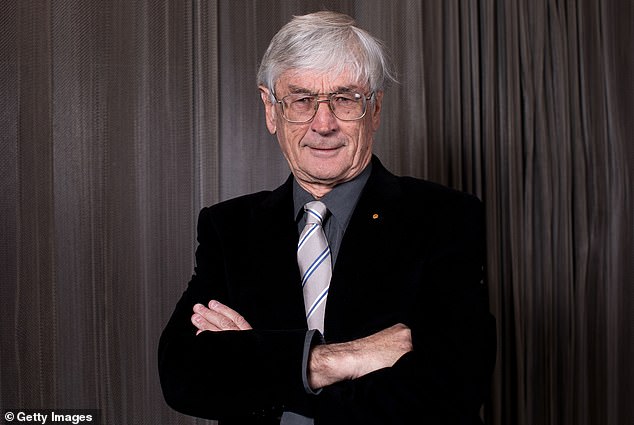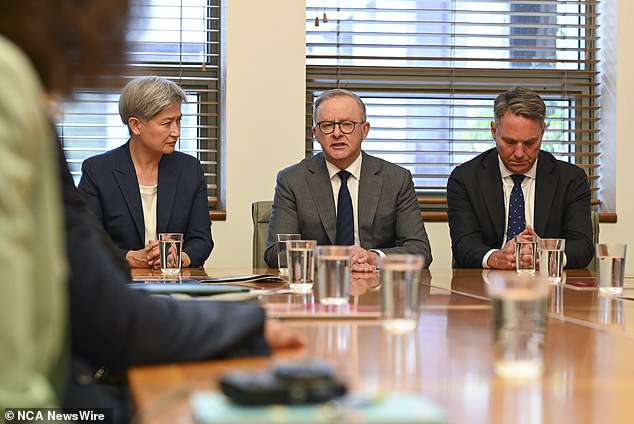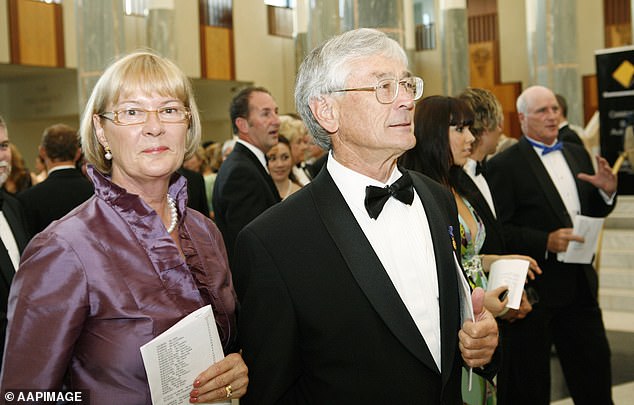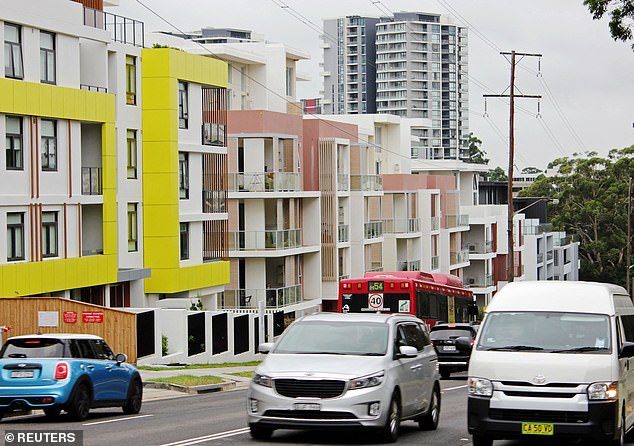Dick Smith issues a wake up call for Anthony Albanese – and the dire warning he wants every Australian to read: ‘Living like battery hens’
Dick Smith says Prime Minister Anthony Albanese's Labor Party has failed the working class by refusing to reduce immigration during a cost-of-living crisis.
More than 400,000 migrants arrived in Australia over the year to September as house prices rose by double digits despite the Reserve Bank's aggressive interest rate hike.
Rents in capital cities have also risen by double digits in the past year, while inflation is still stubbornly high at 4.9 percent. This raises fears of further interest rate increases as strong population growth increases housing demand.
Mr Smith told Ny Breaking Australia that Labor has failed in its duty to help struggling suburban people who traditionally vote for the ALP.
“Labour has failed the working class because it has failed to communicate that we need a population plan,” the 79-year-old entrepreneur said.
'You would think they would have a population plan so that working people can buy a house and buy their food.

Dick Smith says Prime Minister Anthony Albanese's Labor Party has failed the working class by refusing to cut immigration during a cost-of-living crisis
“We need sensible levels of immigration so that people can afford homes as they did in our country's first century and a half.”
Mr Smith lamented the fact that young people could no longer afford a house with a backyard and were forced to live in high-rise apartments.
He agreed that the Silent Generation and Baby Boomers had a much easier time than today's young people when it came to buying their first home.
The businessman bought his first home in Greenwich on Sydney's lower north shore for just $32,000 in 1973, four years after marrying wife Pip and five years after founding Dick Smith Electronics.
'It had a beautiful view of the harbour. It was a house on a large piece of land, we put a swimming pool in it and the children could play in the garden – simply fantastic.
“We put down a deposit of about $6,000, which was easily raised.”
He said it is now “almost impossible” for young people to buy a house.
“Especially something with a backyard where the kids can play,” he said.
'It means that the young people will live like battery chickens instead of free range.
'They live in high-rise buildings, they live like termites. I think it's a complete disaster.'

More than 400,000 migrants arrived in Australia over the year to September as prices rose by double digits despite the Reserve Bank raising interest rates (pictured at Sydney Town Hall train station)

Mr Smith told Ny Breaking Australia that Labor has failed in its duty to help struggling suburbanites who traditionally vote Labour.
He said business lobby groups and developers vociferously pushing for high immigration were making it so difficult for young people to enter the property market.
“It is driven by total greed and it will ruin the country for most people,” he said.
“About 30 percent of our population lives from paycheck to paycheck and has no savings at all.”
He said wealthy business interests had more influence over the Labor government than unions when it came to immigration.
“I have no doubt that politicians are very wary of sidelining the rich, otherwise I can't think of any reason why Labor would want such high immigration,” he said.
'You don't hear the unions calling for immigration, but you do hear the rich.
“Our system of capitalism, from which I have benefited so much, needs continued growth and use of resources, energy and population or it will enter a recession.”
Mr Smith said both major political parties were relying on donations from companies that were driving strong population growth.
“It's quite clear that no political party will stand against the rich, they're just not game,” he said.
'That would be a way not to be chosen.
'The disadvantage of a democracy is that you get groups that become very powerful and that politicians have to bow to them in order to get elected.'
Mr Smith wants Australia's net annual immigration level to be reduced to 70,000 people a year, where it was in 1997 before immigration climbed to six figures and continued to rise until the 2020 pandemic.
In the year to September, migration increased the population by 429,580 people, including both permanent and long-term arrivals.

Mr Smith bought his first home in Greenwich on Sydney's lower north shore for just $32,000 in 1973, four years after marrying wife Pip and five years after founding Dick Smith Electronics (the couple are pictured in 2010)

Mr Smith lamented how young people could no longer afford a house with a backyard and were forced to live in high-rise apartments (pictured are apartments in Epping in Sydney's north).
The permanent segment, with a maximum of 190,000 for the period 2023-2024, includes 137,100 skilled migrants and to a lesser extent 52,500 places for family reunification and people with humanitarian visas.
As a result, international students make up the vast majority of new migrants, putting pressure on rental prices, while overseas inflows have been rising since Australia reopened in December 2021 following the Covid border closure.
Australia's population now stands at 26.5 million, but Mr Smith said this could reach 100 million by the end of the 21st century, ending Australia's uniqueness as a large, arid country with a relatively small population.
“Not many people I speak to believe that $100 million is sensible for a barren country like Australia,” Smith said.
“One of Australia's great advantages is that it is a big country with a small population, but we are going to destroy that.”
Sydney's average house price of $1.397 million is now 14.6 times an average full-time salary of $95,581.
With a 20 percent down payment of $279,378, someone with a $1.117 million mortgage would have a debt-to-income ratio of 11.7 – almost double the recommended maximum of six.
When Mr Smith bought his first home in 1973, the average house price in Sydney was $27,400.
With a 20 percent deposit of $5,480, an average single earner with a salary of $5,517 had a manageable debt-to-income ratio of four.
Despite the RBA's 13 rate hikes since May 2022, average house prices in Sydney have risen 12.5 per cent since January, CoreLogic data for November shows.
Ny Breaking Australia has contacted the Prime Minister's Office and Business Council of Australia.
